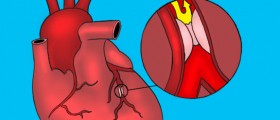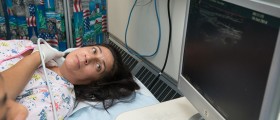
Pulmonary embolism is a life-threatening medical condition that develops due to blockage of one or more arteries in the lungs. In majority of cases the blockage is caused by a blood clot that originates from other parts of the body (e.g. veins of the legs). Clinical Characteristics of Pulmonary Embolism
Symptoms and signs of pulmonary embolism depend on the affected artery. In case large blood vessel is affected the symptoms and signs are more severe. Furthermore, additional problems occur if the person is already suffering from some other medical conditions, predominantly heart and lung conditions.
Pulmonary embolism most commonly leads to shortness of breath, chest pain and cough (with or without bloody or blood-streaked sputum). Patients may additionally suffer from wheezing, there may be leg swelling (pointing to the actual source of the blood clot) and in severe lack of oxygen an individual becomes cyanotic. Serious forms of pulmonary embolism feature with profuse sweating, rapid and/or irregular heart beat, weak pulse and carry a high risk of lightheadedness and fainting.
What Causes Pulmonary Embolism?
Pulmonary embolism develops as a result of obstruction of the lung artery/arteries. In most cases a blood clot is responsible for the blockage but there are also other potential culprits of artery obstruction. They include fat tissue originating from the bone marrow or a broken bone, parts of the tumor and air bubbles that have entered an injured blood vessel.
The blockage results either from a single blood clot or other material and there is also a chance of multiple blockage. Patients suffering from deep vein thrombosis and those with severe fractures of long bones are at higher risk of pulmonary embolism.Therapy for Pulmonary Embolism
It is essential to diagnose pulmonary embolism as soon as possible and start with immediate treatment. Only this way a potential lethal outcome can be successfully prevented.
If pulmonary embolism is caused by blood clots, patients are treated with anticoagulants. One of these agents is heparin. It is administered intravenously and it soon dissolves the blood clot responsible for the blockage. The treatment may continue with another drug called warfarin. It is taken in a form of a pill. Patients with severe breathing difficulty require oxygen therapy.
Certain number of patients suffering from pulmonary embolism are treated surgically. The doctor may perform removal of the blood clot with a thin and flexible tube called catheter. This is generally done in case of large blood clots.
And finally, patients who have had pulmonary embolism are at an increased risk of repeated blockage and cannot take anticoagulants for a longer period of time require placement of a vein filter in the legs. The filter blocks blood clots and does not allow them to spread to the rest of the body i.e. reach vital organs such as lungs or brain.

















Your thoughts on this
Loading...